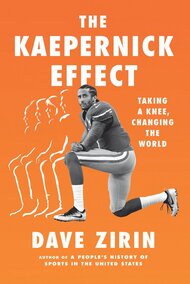Jackie Robinson’s Last Fight

As baseball celebrates the 75th anniversary of Robinson’s breaking the color line, it’s worth remembering a man at odds with his own myth.
Seventy-five years ago, a World War II veteran named Jack Roosevelt Robinson smashed baseball’s color line and officially desegregated America’s pastime. A near full decade before the Montgomery Bus Boycotts, Jackie Robinson was a one-man cvil rights movement, a living symbol in 1947 against racism, segregation, and white supremacy wherever his Brooklyn Dodgers played ball. This is why Dr. Martin Luther King Jr. would come to famously call Robinson “a sit-inner before sit-ins. A freedom rider before freedom rides.”
But Robinson wasn’t content to be merely a symbol. After retiring from the Dodgers in 1957, he became a barnstorming speaker and columnist advocating for the civil rights movement. He was fearless, crossing polemical swords with figures ranging from Richard Nixon to Malcolm X. And when speaking to audiences, he would end by saying, “If I had to choose between baseball’s Hall of Fame and first-class citizenship, I would say first-class citizenship to all of my people.”
In 1958, he was lead organizer of the Youth March for Integrated Schools. The goal of this demonstration was to organize 1,000 Black and white students to demonstrate at the Lincoln Memorial. They got 10,000, and its success inspired the March on Washington, where Robinson also marched at the front.
It was through his experience in the movements that Robinson wrestled with something that tortured him for the remainder of his life: The fact that his story of breaking the baseball color line was already being told as a triumph of Robinson overcoming prejudice through his own singular greatness, a bootstrap tale that sold a myth of a color-blind America where anyone Black or white could make it in this country if only they were only willing to work as hard and be as exceptional as Jackie Robinson. It followed that the inability to meet that standard was a personal failing. As an aspirational figure, a sort of Horatio Alger on spikes, Robinson could have coasted. But he believed they had turned his story into a fable, and so he spent the last years of his life in a relentless battle against his own legend.
As Robinson said, “All these guys who were saying that we’ve got it made through athletics, it’s just not so. You as an individual can make it, but I think we’ve got to concern ourselves with the masses of the people—not by what happens as an individual, so I merely tell these youngsters when I go out: Certainly I’ve had opportunities that they haven’t had, but because I’ve had these opportunities doesn’t mean that I’ve forgotten.”
His memoir, published the week after his death, spoke to this desire to fight the fiction that surrounded his journey: Its title, poignantly, was I Never Had It Made.
This battle by Robinson to not have his own narrative hijacked was grueling and contributed to his ill health and premature death by heart attack at age 53. Nine days before his death, Robinson attended the 1972 World Series to commemorate the 25th anniversary of his breaking the color line. In failing health, he took the microphone, and instead of speaking to baseball’s progress over the previous quarter-century, as commissioner Bowie Kuhn undoubtedly hoped, he called out the absence of Black managers in Major League Baseball. In other words, to his last breath, he never stopped agitating for change. Out of respect for the man and not the myth, his last struggle deserves to be remembered. If we want to celebrate Robinson, let us also celebrate the truth he fought to reveal: that racism needs to be challenged collectively, by all of us, and we are all worthy of nothing less than first class citizenship, by any means necessary.
More columns ⇒
Support the Work
Please consider making a donation to keep this site going.
Featured Videos
Dave on Democracy Now!

